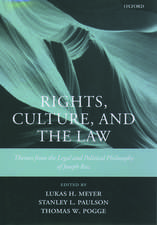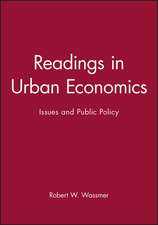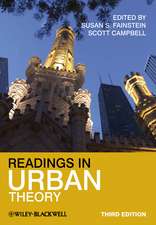Unequal Crime Decline – Theorizing Race, Urban Inequality, and Criminal Violence
Autor Karen F. Parkeren Limba Engleză Paperback – 11 iul 2010
Crime in most urban areas has been falling since 1991. While the decline has been well-documented, few scholars have analyzed which groups have most benefited from the crime decline and which are still on the frontlines of violence--and why that might be. In Unequal Crime Decline, Karen F. Parker presents a structural and theoretical analysis of the various factors that affect the crime decline, looking particularly at the past three decades and the shifts that have taken place, and offers original insight into which trends have declined and why.
Taking into account such indicators as employment, labor market opportunities, skill levels, housing, changes in racial composition, family structure, and drug trafficking, Parker provides statistics that illustrate how these factors do or do not affect urban violence, and carefully considers these factors in relation to various crime trends, such as rates involving blacks, whites, but also trends among black males, white females, as well as others. Throughout the book she discusses popular structural theories of crime and their limitations, in the end concentrating on today's issues and important contemporary policy to be considered. Unequal Crime Decline is a comprehensive and theoretically sophisticated look at the relationship among race, urban inequality, and violence in the years leading up to and following America's landmark crime drop.
| Toate formatele și edițiile | Preț | Express |
|---|---|---|
| Paperback (1) | 202.63 lei 6-8 săpt. | |
| MI – New York University – 11 iul 2010 | 202.63 lei 6-8 săpt. | |
| Hardback (1) | 511.76 lei 6-8 săpt. | |
| MI – New York University – 30 sep 2008 | 511.76 lei 6-8 săpt. |
Preț: 202.63 lei
Nou
Puncte Express: 304
Preț estimativ în valută:
38.79€ • 40.32$ • 32.16£
38.79€ • 40.32$ • 32.16£
Carte tipărită la comandă
Livrare economică 06-20 februarie 25
Preluare comenzi: 021 569.72.76
Specificații
ISBN-13: 9780814767856
ISBN-10: 0814767850
Pagini: 180
Ilustrații: black & white illustrations, black & white tables, figures
Dimensiuni: 152 x 229 x 15 mm
Greutate: 0.25 kg
Editura: MI – New York University
ISBN-10: 0814767850
Pagini: 180
Ilustrații: black & white illustrations, black & white tables, figures
Dimensiuni: 152 x 229 x 15 mm
Greutate: 0.25 kg
Editura: MI – New York University
Notă biografică
Karen F. Parker is Professor of Sociology and Criminology at the University of Delaware. She is the 2008 winner of the Coramae Richey Mann Award from the Division on People of Color and Crime of the American Society of Criminology for her outstanding contributions of scholarship on race/ethnicity, crime, and justice.
Descriere
Crime in most urban areas has been falling since 1991. This title presents a structural and theoretical analysis of the various factors that affect the crime decline, and offers insights into which trends have declined and why. It considers the indicators such as employment, labour market opportunities, skill levels, and housing.
Recenzii
"The crime decline that began in the early 1990s and ran for more than a decade is the largest sustained drop in crime rates ever recorded in the United States - and yet this remarkable event has gone largely unheralded. Parker illuminates this unexplored terrain by shining a light on the unevenness of the decline across key subgroups defined especially by race, gender and class. Her book is required reading for anyone interested in the make up of this fascinating piece of criminology history." - Gary LaFree, author of Losing Legitimacy: Street Crime and the Decline of Social Institutions in America""There has been much speculation as to the source and meaning of the crime drop of the 1990s. Yet, relatively unexamined is whether crime rates declined uniformly across all groups and, if not why not? In this important book, Parker carefully examines homicide trends for different combinations of race and gender specific groups over three decades and convinces us that crime trends are far from uniform. What then accounts for the race and gender disparities in homicide trends? Parker offers more nuanced explanations by exploring how changes in the urban landscape over several decades have differentially affected blacks and whites and males and females. Parkers book is a significant achievement, merging sophisticated quantitative techniques and analysis with sociological insights about structural changes in our cities that also affect urban crime rates. She has raised important questions about the crime drop and at the same time has provided a number of new directions for future research. This is a provocative and stimulating book which should prompt criminologists to more carefully deconstruct crime patterns and trends by race and gender." - Sally S. Simpson, author of Corporate Crime, Law, and Social Control






















